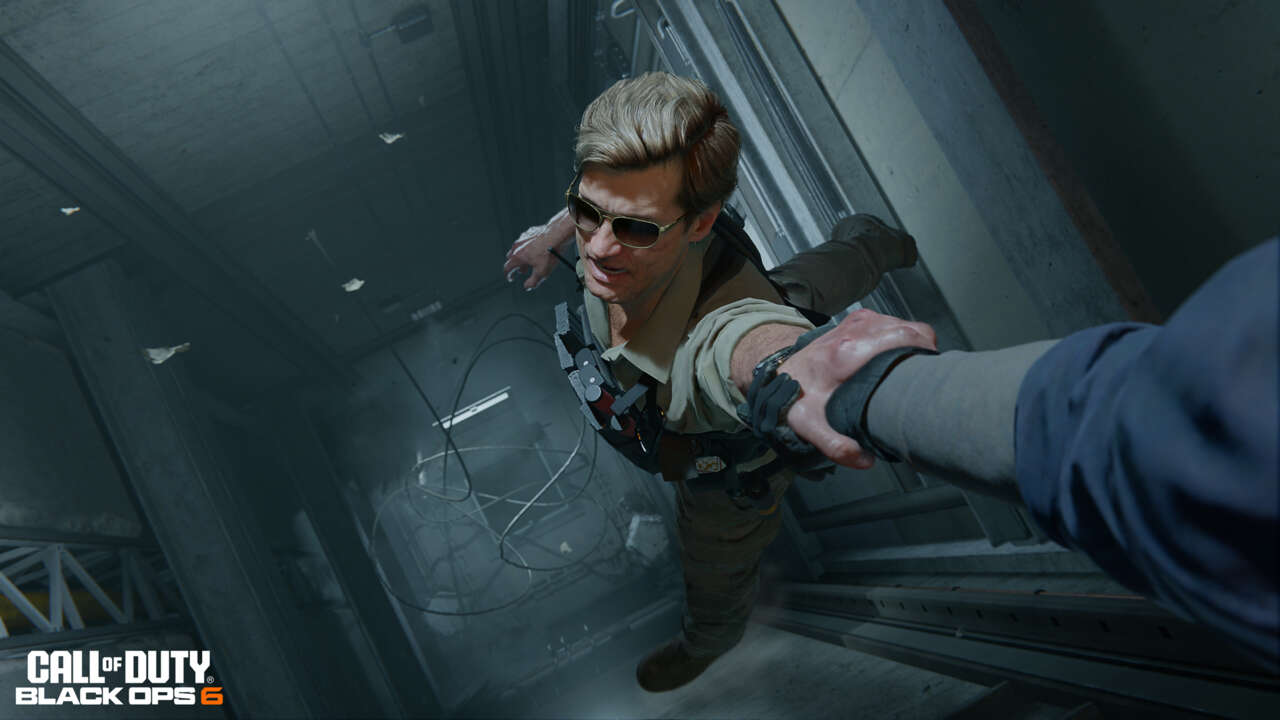Call of Duty: Black Ops 2 remains my favorite of developer Treyarch’s contributions to the long-running and sometimes formulaic shooter franchise, because it’s the one that takes the most wild swings. It mixes traditional Call of Duty linear levels with a top-down, real-time-strategy-like experience that lets you move troops around the battlefield and then zoom down like a gunslinging ghost to possess any one of them and do the fighting yourself. It also logs your choices, your successes, and your failures, and adjusts its convoluted branching narrative to account for them.
The spirit of Black Ops 2 is alive in Call of Duty: Black Ops 6, and not just because it actually serves as a semi-prequel-sequel to that 12-year-old game. Black Ops 6 infuses the standard Call of Duty formula with level designs and mission ideas that challenge the usual Call of Duty framework in much the same way. It’s not as brazen as Black Ops 2 was–that game was admirable for going all-out, but not all of its ideas were home runs in execution–and there’s no branching narrative or major departure from Call of Duty gameplay in Black Ops 6. Instead, Treyarch works in creative but familiar design additions that break up and expand on its campaign, making for an experience that maintains the franchise’s cinematic, high-yield explosiveness, while also providing numerous opportunities to feel like a super spy and super soldier.
There’s a lot of story going on in Black Ops 6, but as is usually the case in the franchise, it’s at once both pretty simple and weirdly complex. The gist is that, as part of a covert mission during Operation: Desert Storm, your CIA operative player character–a silent protagonist named Case–and his teammates Marshall and Harrow run into Russell Adler from Black Ops: Cold War. From Adler, you learn about The Pantheon, a paramilitary organization full of American ex-soldiers and others, operating secretly inside the CIA but with their own evil agenda. The rest of the game is about teaming up with Marshall, Adler, and Black Ops mainstay Frank Woods, recruiting a couple spies, and trying to figure out who The Pantheon is and how to stop them. It’s all standard fare for a game like this.
It’s in the missions themselves that things get a little less predictable. The covert operations thrust means that while you’ll sometimes do missions where you just march forward and shoot guys in an approach that harkens all the way back to the beaches of Normandy and the first Call of Duty, there are also plenty of other moments where you need to be sneaky and careful. Your mission to bring aboard master of disguise Sev is a low-profile trip through mob enforcers, in which you listen in on a phone call and then assassinate an underling. You’re more or less free to figure out your way into a well-guarded church belltower to set up for the shot. You can blast your way in or stealth your way through, and while the level isn’t huge or expansive in an immersive-sim way, there are enough options that your choice of how to approach the problem feels meaningful.
There are a bunch of opportunities for stealth like this. Black Ops 6 isn’t great as a stealth game–enemies are dumb as hell, their peripheral vision is basically nonexistent, and you can crouch-walk right behind them with zero consequences. But the weak stealth works because the density of enemies in any given area makes up for their lack of brains, and because of how great it feels to crack off a headshot with a silenced pistol on a soldier you forgot about right before he calls for help. Call of Duty’s consistently great gunplay means that when stealth fails, it just leads back to what the franchise is best at. It also means you can save a scuffed attempt at sneakiness by fluidly taking out all the enemies in a room before they realize what’s going on, and doing so is satisfying every single time.
Gallery
Several missions use this combination of stealth, action, and freedom in approach to problems to solid effect. When you head back to Desert Storm, the mission takes on a sort of wide-linear design, where you jump in a car with your team and drive around a big map, completing objectives as you see fit. Scouting an approach, tagging enemies with a special camera that highlights them for you, gives the whole affair a Far Cry-lite feel.
The mission isn’t as robust or systematically interesting as Far Cry, but that little extra freedom and planning is a great way to lead into Call of Duty’s over-the-top battles when you finally start shooting. Your job here is to assault some big, well-defended Scud missile launchers, but you can also wipe out Pantheon camps to gather intel on the group’s plans, save a band of crashed Delta Force soldiers, and knock out anti-air missile batteries to allow for air support. Completing the side objectives gives you Scorestreak rewards like the ability to call in an attack helicopter or an airstrike; coupled with the many gadgets Black Ops 6 includes, you wind up with a lot of creative, explosive ways to solve problems throughout the mission.
And to Black Ops 6’s credit, this formula is never repeated. Instead, Treyarch fleshes out an idea for a single mission, uses it well, and then leaves it. There’s a horror-themed level that gets pretty spooky, an infiltration level that pushes your spy abilities a bit, and even a heist level in which you play as each member of the team as they complete their portion of the plot, Ocean’s 11-style. When you sneak into a Bill Clinton campaign event to get a senator’s retinal scan, you get multiple options for how to set up a chance to photograph him; I followed his aid to learn about a blackmail scheme, stole the compromising material from the blackmailers, and then turned it over to the senator’s wife in exchange for the shot I needed. You get a couple of opportunities to make choices like this throughout the campaign. They don’t drastically change the overall formula, but they give you a little more agency and influence on how a mission shakes out.
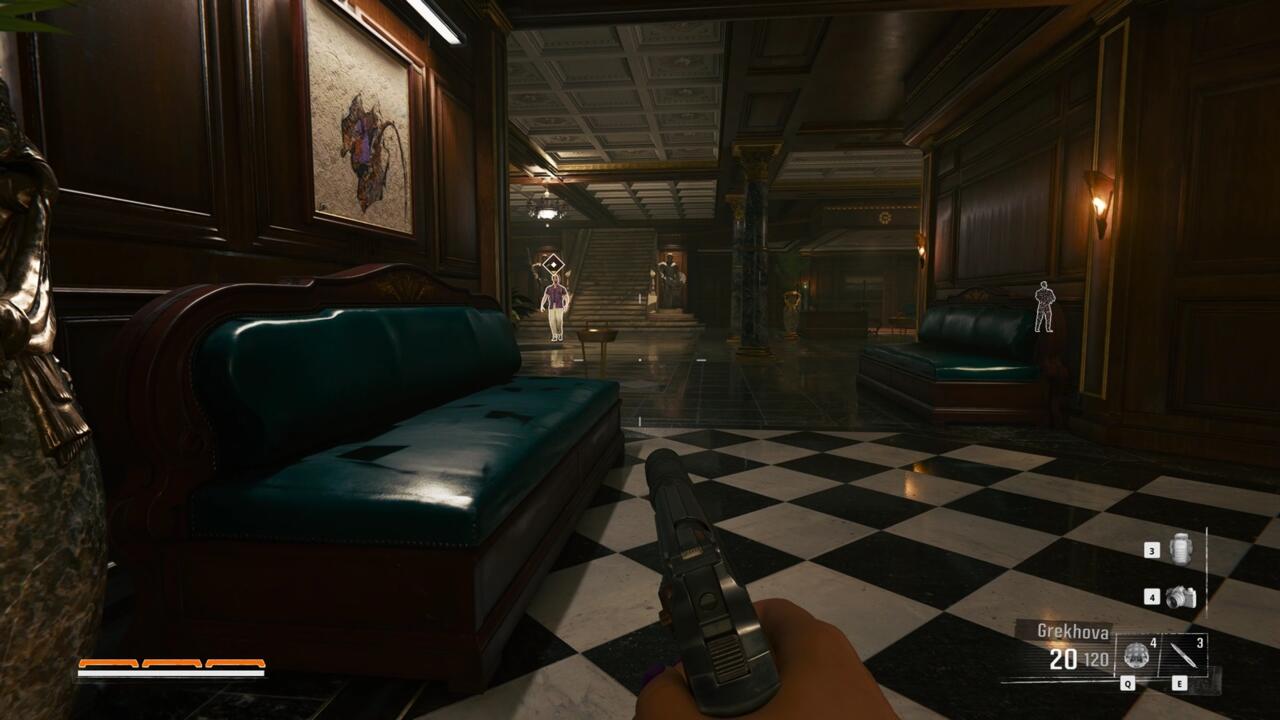
The creative additions to Black Ops 6’s missions are consistently fun and even surprising. While none of the levels blow the doors off in terms of new ideas–the horror level makes liberal use of Zombies from that game mode, the heist leans pretty hard on those somewhat-anemic stealth mechanics–they’re tried-and-true additions that work well with Call of Duty’s underlying gameplay. Black Ops 6 lacks Black Ops 2’s willingness to take big swings, but it does add some solid variety to the usual Call of Duty experience, even if those additions are still a bit conservative.
In addition to Call of Duty’s usual solid shooting mechanics, which make all the guns feel punchy, lethal, and exciting to use, Black Ops 6 throws the usual load of gadgets your way. The exploding RC car is back, and you can use things like an adrenaline shot that slows down time, a knife that homes in on enemy faces, and a throwable taser that stuns whoever it hits. All those items are available in most missions, and you can carry and switch between all of them, giving you more options for creatively addressing firefights.
In a fun twist, Black Ops 6 deploys Pantheon “elite” enemies that have many of those gadgets, too. For example, one hides behind cover and sends exploding RC cars at you, forcing you to shoot them before they reach you; another leaves taser traps all over the battlefield that will stun you if you get too close. Elites aren’t in every battle, but when they appear, they force a change in strategy that’s more interesting and thoughtful than what’s needed to deal with the usual cannon fodder soldiers.
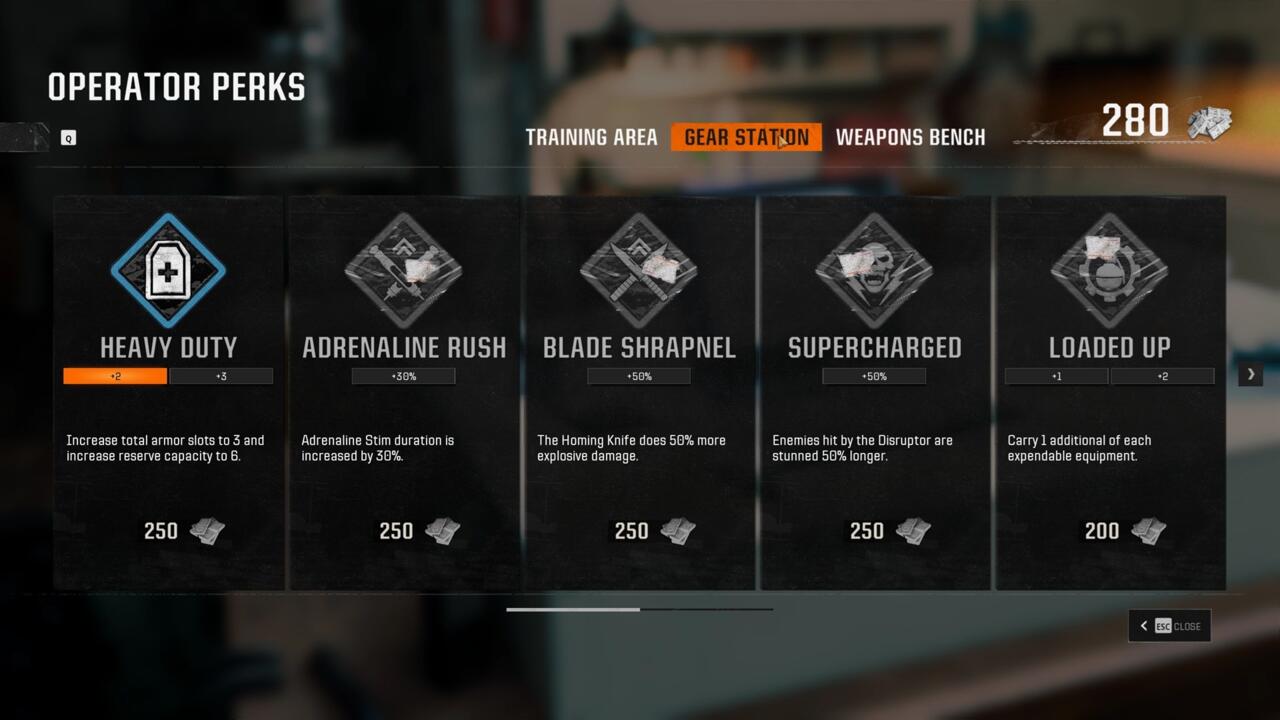
Gadgets give you some options for how you approach fights within the game, and you can also tune your playstyle in a few different ways by purchasing upgrades for your character at the safehouse where you spend time between missions. These exist along three different tracks, related to your physical abilities, weapons, and gear, and the system incentivizes you to scour missions for extra cash so you have the resources to purchase them. Many of the upgrades are similar to the perks you can choose in multiplayer, while others are minor boosts.
Early on, when your money is limited, the upgrade trees give you some choices to customize your play style–if you want more gadgets or to have their effects last longer, you can pay for those upgrades, but if you’d rather be quicker on the draw or carry more ammo, you can opt to improve those elements instead. Eventually you can purchase all the upgrades, which give you a lot of small enhancements that, taken together, make you a more powerful Call of Duty character. The upgrades give you a little more freedom and agency in tuning your approach to Black Ops 6, but none of them are so substantial that they’ll drastically change how the game plays, even when you have them all. The upgrades are nice adjustments to the usual approach that fit well with Call of Duty’s shooter mechanics, but like other additions, they’re tweaks to that formula rather than significant edits.
There’s also the new omni-movement system, which allows you to sprint, slide, and dive in any direction without losing momentum, and it feels pretty good in practice. Gameplay never demands you make use of the system, but it adds a little fluidity to gunfights when you run and slide into a new cover position or pull an action-movie dive as you unload on an opponent. It’s generally a good addition that makes everything feel a little smoother in Black Ops 6, but I wish it got further emphasis or was amplified to be more necessary and useful.
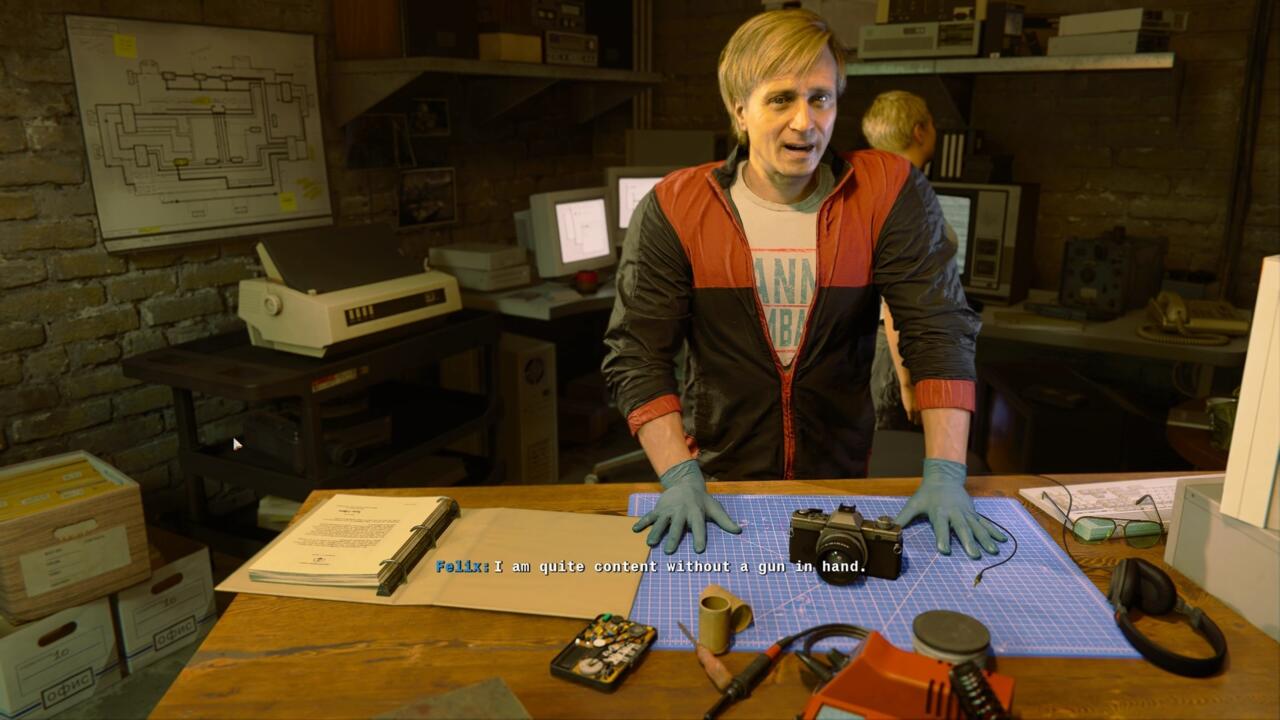
A usual lament for these games is that the story can’t keep pace with the gameplay, and that’s the case in Black Ops 6 as well. Character dialogue is constantly oscillating between in-the-know military jargon and wall-to-wall cliches. Still, spending time with your team in one-on-one conversations makes for some of the best moments in the game, and Black Ops 6 gives you plenty of opportunities to do so in the safehouse. A big part of what makes Black Ops 6 engaging is its phenomenal performances, matched by excellent face scans and animations that capture a lot of nuance in the actors’ portrayals. Everybody in this game looks great, and when they’re not spouting off strings of cliches, quips, and idioms, there’s a fair amount of emotion that makes them relatable.
In particular, new additions Sev and Felix are well-rounded characters, and I always found myself hoping for more of them. The game threatens to do particularly interesting things with Felix, a former East Berlin spy who defected to the West. Felix is a legendary operative and technical genius who has sworn off violence when he joins the team. You can question him about it a few times, always in a sort of “are you serious … are you sure about that” kind of way, but Felix espouses clear convictions about how he feels and what he’s done. It’s a shame that, later in the game, his convictions aren’t as core to his identity, but he at least has some great dialogue that explores his arc. If only the game had followed that thread further.
Sev is similarly cool and similarly underused. She formerly served the mafia family you help her dismantle in an early mission–after she was betrayed by the people she trusted, something she’ll tell you about if pressed, she launched a bloody campaign of revenge. She might be the best operative on the team, and a mission where you play as her in disguise, wandering around an enemy camp finding ways to sabotage their equipment, is another winner, even if it’s undercut a bit by the stealth system. Sev has a moment where Marshall doesn’t let her join everyone else on a mission and she gets pretty angry about it, and while there are hints that this could be something to explore in her character as well as those of the rest of the team, Black Ops 6 never really digs in. There are several revealing and emotional character moments in the campaign like this, and it’s a shame Black Ops 6 never commits to making them meaningful for the larger narrative.
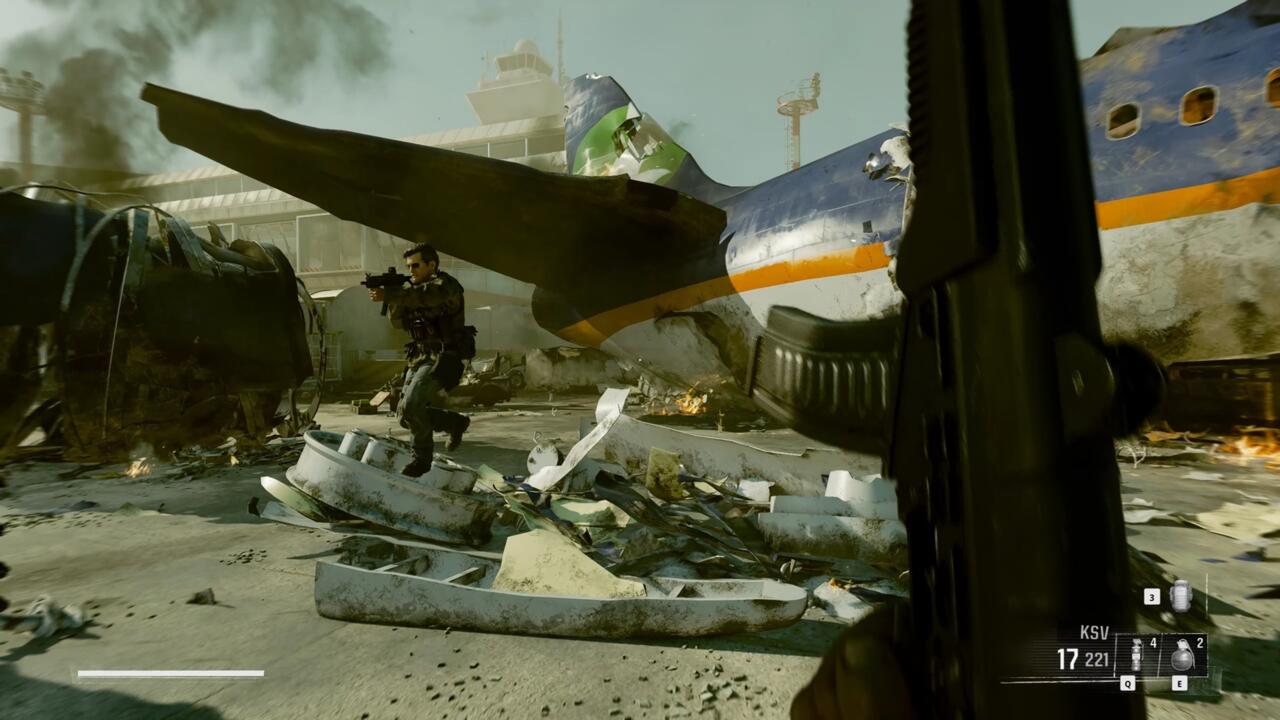
I still don’t really get the larger narrative, and the inclusion of elements like the digital Clinton cameo or a raid on a Saddam Hussein palace play like additions to try to make a weirdo story feel more realistic and less meaningless, without accomplishing either. Like a lot of these games, Black Ops 6 gestures in the direction of some larger point about spies and operatives fighting shadowy wars for unaccountable people, but eventually trails off without committing.
I got especially lost in a late-game turn where you spend a bunch of time inside the mind of the villain during an interrogation. It’s a reminder that Call of Duty games often have the problem of acting like they expect you to know more than you do, and thus always causing you to feel like you missed something or are forgetting a crucial point. This person has appeared in, like, two scenes–should I know who they are? Were they in past games? Should I care about their moral struggles and tragic backstory? The whole sequence is an effort to humanize a character I had almost zero relationship with, so it amounts to a lot of illusory wheel-spinning. It doesn’t help that surreal shattered-landscape-of-the-mind levels like this have been done to death by plenty of games–including Call of Duty, as they were basically the focus of Black Ops 3.
Your main player character, Case, also has weird “should I know what’s going on here” moments that recall Alex Mason’s brainwashing in the original Black Ops, but to much less interesting or goofy effect. It’s a half-baked addition that doesn’t have much bearing on the story except right at the end, making for a bewildering conclusion. There are a few things in Black Ops 6, like Case, the villain, and the overarching Pantheon conspiracy, that end up feeling like good ideas that just sort of peter out. While many people may not come to a Call of Duty game for the story, Black Ops 6 disappoints because it does occasionally come close to telling a pretty good one.
Still, the overall experience of Black Ops 6 is enjoyable, mostly due to its willingness to work in a variety of different ideas and approaches to its levels before bringing you back to the familiar and reliable shooting of a million enemies. Black Ops 6 is at its best when it gives you all its tools and lets you loose to deal with a problem as you see fit. It provides a lot of those opportunities, adding just enough to the underlying gameplay that you get the satisfaction of formulating a strategy and executing it, as well as the fun of dealing with the fallout, whether it goes to plan or not. Black Ops 6, like Black Ops 2, combines gameplay ideas to make something that feels a little different from the usual for Call of Duty, and while not every system or addition is a knockout, taken together, they make something that shows how Call of Duty games can grow without losing what makes the franchise great.
